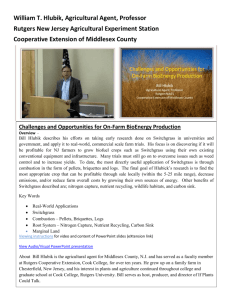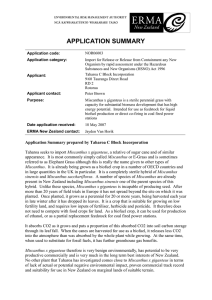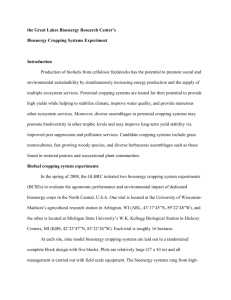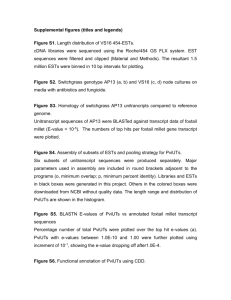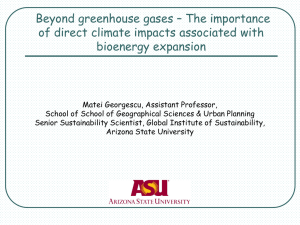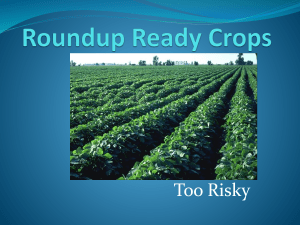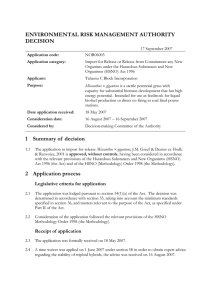Video 3 Learning Module
advertisement
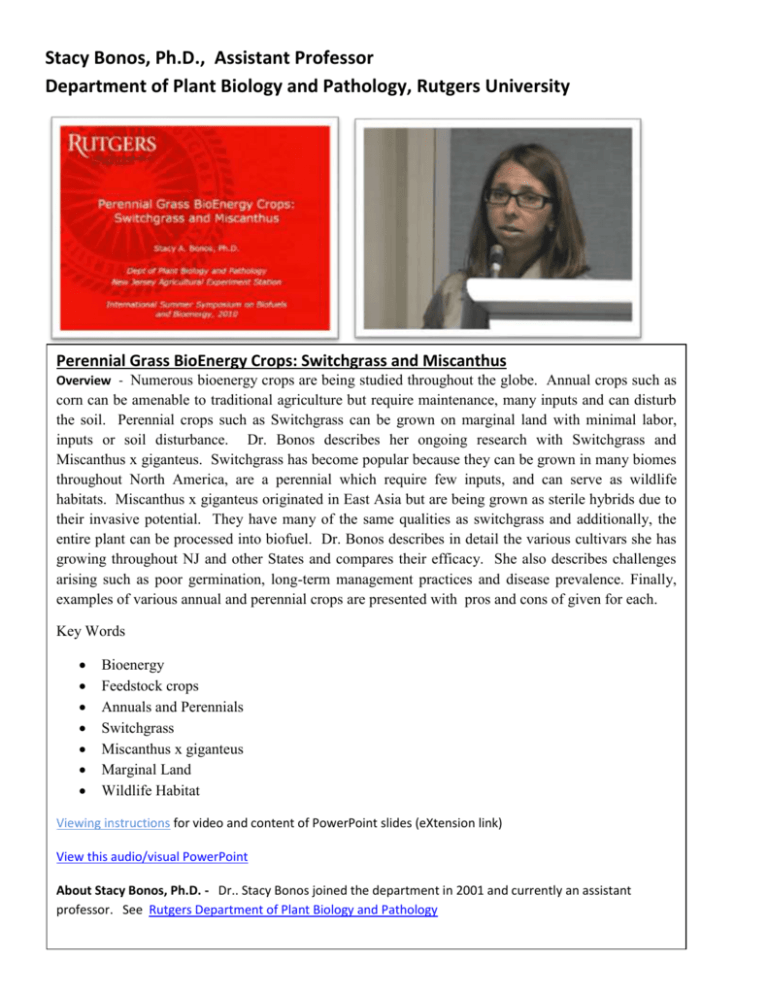
Stacy Bonos, Ph.D., Assistant Professor Department of Plant Biology and Pathology, Rutgers University Perennial Grass BioEnergy Crops: Switchgrass and Miscanthus Overview - Numerous bioenergy crops are being studied throughout the globe. Annual crops such as corn can be amenable to traditional agriculture but require maintenance, many inputs and can disturb the soil. Perennial crops such as Switchgrass can be grown on marginal land with minimal labor, inputs or soil disturbance. Dr. Bonos describes her ongoing research with Switchgrass and Miscanthus x giganteus. Switchgrass has become popular because they can be grown in many biomes throughout North America, are a perennial which require few inputs, and can serve as wildlife habitats. Miscanthus x giganteus originated in East Asia but are being grown as sterile hybrids due to their invasive potential. They have many of the same qualities as switchgrass and additionally, the entire plant can be processed into biofuel. Dr. Bonos describes in detail the various cultivars she has growing throughout NJ and other States and compares their efficacy. She also describes challenges arising such as poor germination, long-term management practices and disease prevalence. Finally, examples of various annual and perennial crops are presented with pros and cons of given for each. Key Words Bioenergy Feedstock crops Annuals and Perennials Switchgrass Miscanthus x giganteus Marginal Land Wildlife Habitat Viewing instructions for video and content of PowerPoint slides (eXtension link) View this audio/visual PowerPoint About Stacy Bonos, Ph.D. - Dr.. Stacy Bonos joined the department in 2001 and currently an assistant professor. See Rutgers Department of Plant Biology and Pathology 11/18/10 – Stacey Bonos - Perennial Grass BioEnergy Crops: Switchgrass & Miscanthus Essays 1. Biomass feedstock crops can be annual or perennial. Which are best suited for traditional agriculture techniques and which can be amenable to “marginal” land and why? Which are more environmentally sustainable and why? Be sure to include which require more inputs such as pesticides, water, fertilizer, etc. Give an example of an annual and a perennial feedstock crop. Annual feedstock crops are best suited to traditional agriculture because they are often not native and require relatively high inputs such as synthetic pesticides, herbicides, fertilizers, irrigation and crop rotation. Perennial crops are amenable to marginal land because they are often native to the area in which they are grown and do not require yearly planting. Perennial crops are more environmentally sustainable because synthetic inputs are not added which can often pollute local rivers and streams by stormwater runoff and erosion. These synthetic inputs also require high carbon inputs to create. Some examples of annual feedstock crops are; Camelina, Canola, Soybean and Sweet Sorghum. Some examples of perennial crops are; Switchgrass, Miscanthus, Willow, Poplar and Hazelnut. 2. If a New Jersey farmer was considering growing a biomass feedstock, which species should he or she choose and why? Be sure to discuss the particular costs and benefits associated with the species, as compared to a second species that would not be a good choice economically to produce. A New Jersey farmer should choose a perennial crop such as Switchgrass or Miscanthus x giganteus because they do not need additional inputs such as fertilizers, pesticides or water. They are also less labor intensive to harvest and maintain. In comparison, annual crops such as soybean or corn do require these inputs and labor. These factors are all monetarily expensive and may cost more than the grower receives for the end product, resulting in a net loss. Mutltiple Choice1. Soybeans contain how much oil in their seed? a. 10% b. 20% c. 30% d. 40% 2. Which seed has the highest oil content? a. Soy b. Canola c. Camelina d. Hazelnut 3. Which is NOT a Tropical Plant: a. Oil Palm b. Willow c. Jatropha curas d. Energycane 4. Which perennial grass is NOT native to the Northeastern United States? a. Miscanthus x giganteus b. Switchgrass c. Indian grass d. Big Bluestem 5. Upland Ecotypes are characterized by being: a. Tetraploid b. Finer stems c. Late maturing d. Found in wet habitats 6. When harvesting switchgrass, to obtain maximum yield, it should be harvested a. Once in late Fall b. Once in early Spring c. Once in July and once in Fall/Winter d. Once in early Spring and once in Winter True/False1. 2. 3. 4. Oil crops such as soybean produce cellulosic ethanol – False Switchgrass is established from seed – True Switchgrass has excellent germination – False Crossing a diploid plant with a triploid plant yields a tetraploid – False Fill in The Blank1. Switchgrass is a _____ season (C4) perennial grass. - warm 2. Miscanthus is native to __________. - East Asia

